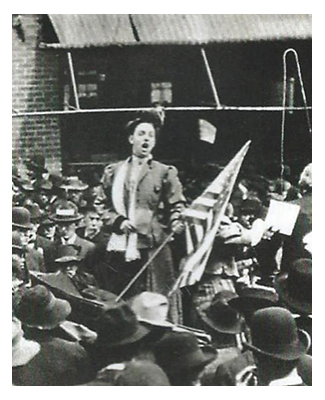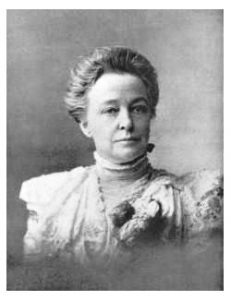More Than Words
By JoBeth Wampler
When my husband and I first suspected our son Joshua might have autism, we reacted like most parents. We’d just returned from a whirlwind vacation and marathon drive home when my sister asked me to speak about my job for a group of students she was mentoring. Bring the kids, she said. We’ve got coloring books and crayons. I’ll entertain them in another room. Just come! So off we went.
It was the day before Josh’s second birthday.
Another long trip in the car that we were growing to hate and we finally arrived a little worn for wear. My sister, standing in the open doorway, waved as we approach. I pulled into the parking lot, looked down into my purse and looked up to see my sister is standing there in front of the car window. She looked like a serial killer – all teeth and wide eyes. I cracked the door and she says her hello. By the way, that girl I was telling you about, she’s here. My sister points at Josh, still strapped innocently in his car seat. That was the moment I almost shut the car door and left.
For months, my sister, the college student psychoanalyst, had been saying Joshua had a problem. He should be speaking by now, she said in her know-it-all tone. My mom had laughed, Give some people a psychology book and they’ll diagnose themselves with 50 new disorders. Give your sister one and she’ll diagnose everyone else. In regards to Josh, my sister talked about something called Asperger’s, obviously getting it confused with its broader spectrum brother Autism Spectrum Disorder (ASD). She was still a student after all. Wrong in a technical sense, but right in intuition.
When she started telling me she worked with a girl whose son had been diagnosed, I started putting her off. This time, she wouldn’t let me escape. Helping me get inside the building, she introduces me and I speak around 20 minutes about my job – something these kids could have cared less about. Sister carts my son and daughter back into the room and motions to one of the other mentors. This is the one, she says in a hushed voice to a girl, pointing down at Josh. Did you notice it? She takes her fingers and rolls an imaginary toy between them, noting his affinity for rolling the wheels on a matchbox car he was gripping.
I think it’s easy to say how you might respond in a moment like that. Some might feel inquisitive – “Anything to help your child.” Some might have taken to heart the good intentions that were there – “They meant well.” I wasn’t there yet. I put on my best face, knowing that’s how I was supposed to respond. I asked questions and listened to the answers.
Inside, I was screaming.
A bunch of college-aged, amateur psychotherapists were analyzing my son – MY BABY – in front of the at-risk teens they were supposed to be mentoring. It was inappropriate. It was presumptuous. And they were wrong. Like my sister had done, the name Asperger’s was thrown around over and over between the group.
With a faux smile on my face and an I love you to my sister, I left that day, barely keeping it together. She didn’t notice, at the time, how fast I was to exit. I pulled onto the roadway and burst into tears. Dialing my husband at work, I told him what had happened and asked him to look up Asperger’s. What is this? Do you think Josh really has this? When we got home, I plowed through all the baby books and realized our son did not have Asperger’s. But this other thing, this autism thing, that actually does sound familiar. That sounds like our son.
The next day, our baby boy’s second birthday, I watched everything he did. It wasn’t his birthday anymore. It was a social experiment to see how different my child was from every other normally developing two-year-old. I noticed every toy he played with and how he played with it. I paid special attention to eye contact and how he avoided mine. I swelled with emotion, repeating back all the statistics in my head about how he may never speak or socialize or notice the world around him the way our daughter would.
Over the next few months, we would learn that our son did, in fact, have Autism Spectrum Disorder and that he may never enjoy a baseball game, come home with a frog in his pocket, kiss a girl, or tell us he loved us. It was the hardest time of our lives, as we came to grips with the possibility we may someday wish he’d die before we did. Because, being on the severe side of the spectrum, it’s possible he’ll never be able to function without our care.
Today, he’s almost seven years old and those words in his mind still haven’t quite found their way to the surface. The few he had learned at two years old are gone. Matchbox cars don’t go ‘Vroom, vroom.’ They’re lined up strategically on the floor or kitchen table. VHS tapes are carted to and from school and garner curious expressions from the grocery store clerk scanning the items from my buggy.
But when that child smiles… When he sees you – not around you, not that thing in your hand, but YOU… When he seeks you out and says, Ticka, ticka, anticipating your movements as you reach out to tickle him under the chin… When he sits quietly and ponders things, and you see that amazing mind working and processing and imagining more than the average person does in his whole life… I dare you not to be enchanted by him. He might have only two words in his vocabulary. He might still wear a diaper and fear haircuts and fingernail trimmers. He might have challenges other kids have long left behind. He might be quirky, more excited to see the ending credits in a movie than anything before them.
However, he’s also one of the most charming little lads you’ll ever meet.

And where there was once overwhelming fear, there’s now acceptance and prayer and hope for the future. There’s the knowledge that God has given us this child for a purpose and He has a plan that’s much greater than any I could have chosen for our family.
Now, tell me what you would do. How you can advocate for this child? How can you speak for him? Is it with words alone?
Awareness, acceptance, reaching out to see who might reach back… That’s exactly what I want for my child; yet, I want more.
Helping others to understand autism is just part of the solution. The rest is up to us to figure out. How can we do more? How can we be more than just words? So while we emphasize awareness this month, shining our blue lights and wearing our puzzle pieces, let us not forget that there’s a lot more to advocating than just spreading the word.
For more information about ASD, understand the signs of autism, or learn about how to advocate for those with autism, visit Autism Speaks.
______________
JoBeth Wampler serves as First Vice President and Leadership Chairman of the GFWC Grundy Woman’s Club. She is also Secretary and Junior’s Special Project: Advocates for Children Chairman of the Southwestern District of the GFWC Virginia. She works as a reporter for the Virginia Mountaineer, Buchanan County’s only newspaper of record, and resides in the Davenport area of the county with her husband Scotty and two children.
 By Nancy Carmon
By Nancy Carmon